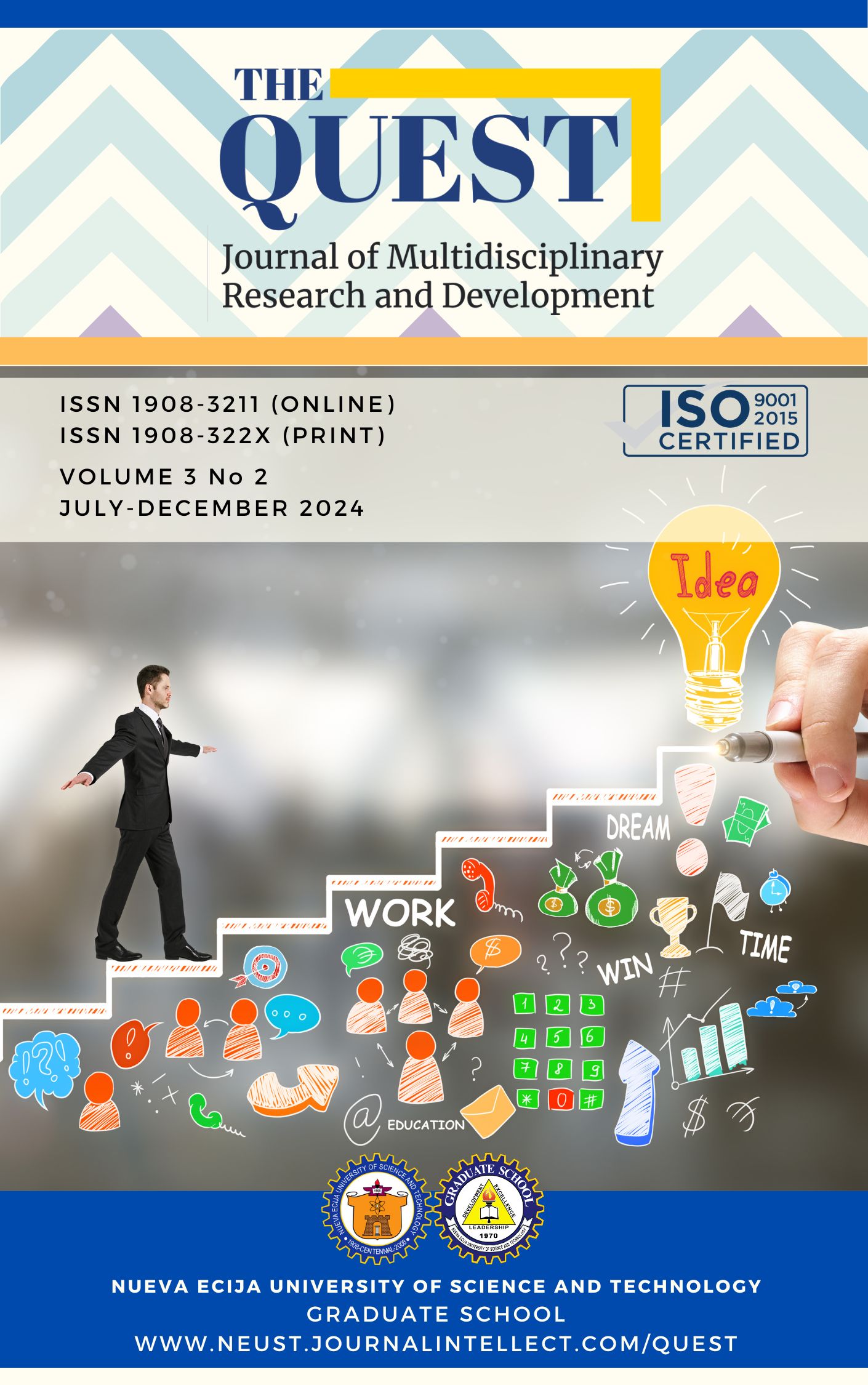Opportunities and Challenges in the Transition to Clean energy of Heilongjiang Energy Sales Company: Basis for Strategic Plan

Published 09/28/2024
Keywords
- Energy company; Challenges, Clean energy; Opportunities; Transition
How to Cite
Copyright (c) 2024 The QUEST: Journal of Multidisciplinary Research and Development

This work is licensed under a Creative Commons Attribution-NonCommercial 4.0 International License.
Abstract
The study at China Huaneng Group Heilongjiang Energy Sales Company explored the transition to clean energy, focusing on the opportunities and challenges involved. It aimed to understand how the company is adapting to this shift by analyzing current operations and evaluating the feasibility of adopting cleaner energy sources. Surveys were distributed to purposively sampled employees, and data was analyzed using descriptive statistics and mean scores. The study provided a detailed characterization of the company, including its business form, years of operation, scope, and asset size as of 2023. It assessed key operational aspects such as technology, production capacity, facilities, and the cost-benefit of transitioning to clean energy. Strategic recommendations were proposed to enhance the company’s readiness for this transition, outlining specific objectives and strategies for implementation. The findings highlighted the importance of maintaining efficiency in both current operations and the shift to cleaner energy sources. The study offered valuable insights and strategic guidance to help China Huaneng Group Heilongjiang Energy Sales Company successfully navigate the transition to a more sustainable energy model while aligning with its financial goals.
References
- Amante, L. (2010). Descriptive research methodology. University Press.
- Codete, R. (2023). The impact of technology on energy companies. Journal of Energy Management, 45(2), 112-125.
- Crossman, A. (2018). Purposive sampling: What is it? Sociology Guide. Retrieved from http://www.sociologyguide.com
- Global Data. (2021). The state of energy production capacity in China. Global Data Reports.
- Guo, J. (2020). Market-based mechanisms and the integration of renewables in China's power sector. Energy Policy Journal, 58(4), 230-245.
- Kolskowka, M. (2023). Challenges in transitioning to clean energy. Energy Transition Review, 15(1), 65-78.
- Lam, T. (2005). Enhancing system flexibility with market reforms. Renewable Energy Quarterly, 29(3), 135-145.
- Meraqui, D. (2023). Infrastructure and technology in clean energy transition. Journal of Clean Energy, 32(2), 204-220.
- Michel, G. (2020). Facilities management in the energy sector. Facilities Journal, 38(5), 345-359.
- Muscad, N. (2023). Maintenance practices and their impact on energy companies. Maintenance Review, 22(3), 180-192.
- Paidant, L. (2023). Political and economic disruptions in energy transitions. Global Energy Review, 47(6), 310-325.
- Stobierski, T. (2019). Cost-benefit analysis for organizational decision-making. Business Decision Journal, 14(1), 78-92.
- Wright, P. (2023). Opportunities in clean energy: A strategic approach. Strategic Energy Insights, 40(4), 98-113.
